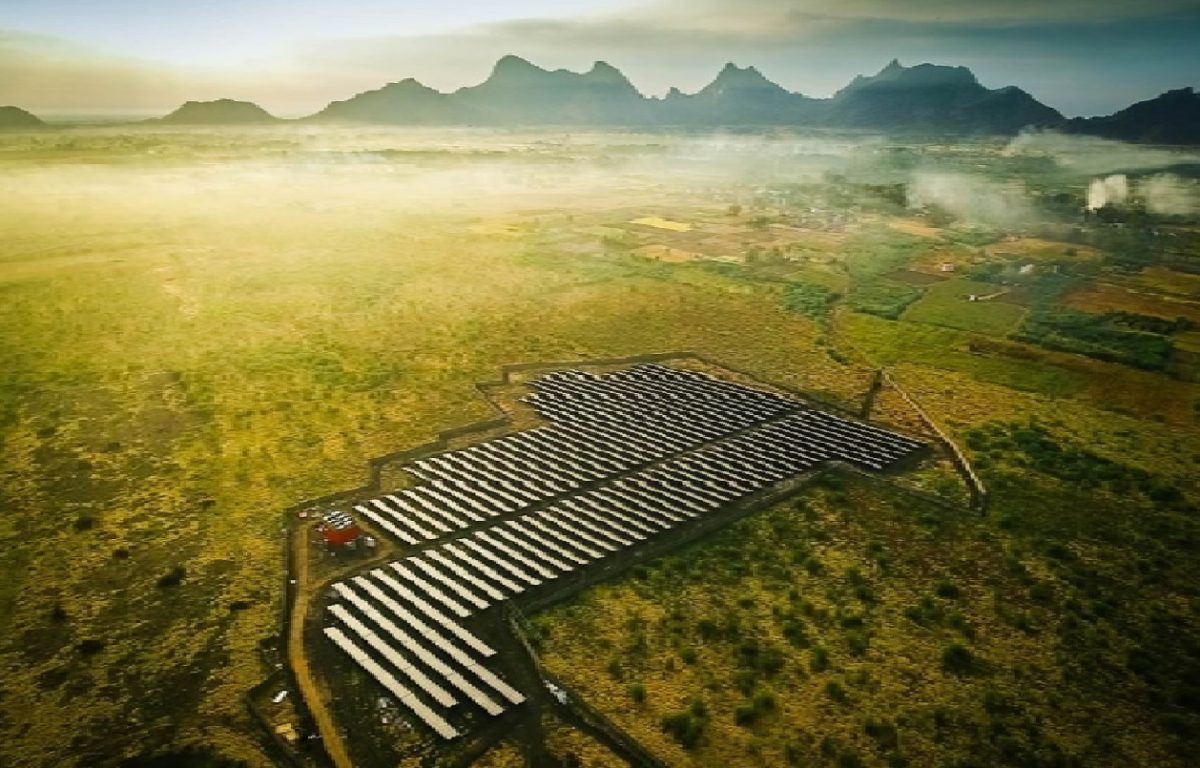India is well on track to achieving its 175 GW target of installed renewable energy capacity on the back of encouraging policy measures, according to the Indian Ministry of New and Renewable Energy (MNRE) that is.
Transparent bidding and the facilitation of procurement of solar and wind power through a tariff-based competitive bidding process have led to a significant fall in the cost of both power sources in India.
In 2017, competitive bidding guidelines for the procurement of solar and wind were issued and, consequently, the lowest tariff of INR2.44 per unit for solar and INR2.43 per unit for wind was reached. The first solar plant bid at INR2.44 will be launched in August.
The government of India has also waived inter-state transmission system charges and losses for the inter-state sale of renewable power for projects commissioned by March 2022. This will encourage the development of projects in states that have greater resource potential and land availability and will also help create a pan-Indian renewable power market, as generation above a state’s requirement can be transmitted to resource-poor states without financial burdens.
The government has already outlined a Renewable Purchase Obligation (RPO) trajectory up to next year and is in the process of extending that to 2022. It is hoped a Renewable Generation Obligation (RGO) will encourage coal-based thermal power generators to diversify into renewables.
To optimize land use and harness solar and wind energy potential, the MNRE has introduced a solar-wind hybrid policy to better harness renewable resources and, to an extent, address renewable energy variability. The Ministry has also introduced a tender for setting up a 2,000 MW solar-wind hybrid in existing projects.
The national target for solar parks has been raised from 20 GW to 40 GW and 41 parks in 21 states with an aggregate capacity of more than 26 GW have already been sanctioned. The largest such project, with a 2 GW capacity, is under implementation in Pavagada, in Karnataka state. A new solar park policy has been announced to encourage participation by private parties and central public-sector undertakings (CPSUs) in setting up such schemes.
To drive domestic solar cell manufacturing, the government has issued an expression of interest for setting up solar PV manufacturing capacity by offering the carrot of an assured offtake of 20 GW.
Green Energy Corridor projects aim to foster grid infrastructure for renewable power evacuation and reshape the grid for future requirements. The intra-state transmission scheme (InSTS) being implemented by eight renewable-rich states with an investment of INR101,410 billion will set up around 9,400 circuit kilometers of transmission lines and substations with a total capacity of around 19,000 MVA, and should be completed by March 2020.
New schemes at advanced stages include the KUSUM (Kisan Urja Suraksha evam Utthaan Mahabhiyan) and the SRISTI (Sustainable Rooftop Implementation for the Solar Transfiguration of India). Under the KUSUM scheme, the government will provide farmers with 2.75 million solar water pumps – 1.75 million of them standalone and 1 million grid-connected. The planned scheme will also help farmers instal 10 GW worth of solar power plants of intermediate capacity – 0.5-2 MW. The scheme also envisages 50,000 grid-connected tube-wells and lift irrigation and drinking water projects. A round-the-clock renewables policy has already been finalized.
“[More than] USD42 billion investment was made in renewable energy in India during [the] last four years,” the MNRE said in a statement. “Indian companies have begun to explore foreign stock exchanges as a source of funds. India is progressively becoming a most favored destination for investment in [renewables].”
Foreign investors can enter joint ventures with Indian partners for financial and/or technical collaboration and for developing renewable energy-based generation projects and having 100% foreign investment as equity secures automatic approval. The government of India is also encouraging foreign investors to set up renewable energy-based power generation projects on a build-own-operate basis.
Renewable projects set up in the last four years have created around 10 million days’ employment annually. Under the Suryamitra program, launched in 2015 to create a qualified technical workforce, more than 18,631 suryamitras have been trained.
“[The] last four years have been path-breaking in India’s renewable energy landscape, with [the] installed capacity of renewable power already reaching [more than] 70 GW,” added the MNRE statement. “[More than] 40 GW [of] renewable power capacity is under construction [or] tendered. Globally, India stands fifth in renewable power [rankings] and sixth in solar power installed capacity. Solar energy capacity increased [more than] eight times – from 2.63 GW in 2014 to 22 GW.”
This content is protected by copyright and may not be reused. If you want to cooperate with us and would like to reuse some of our content, please contact: editors@pv-magazine.com.









By submitting this form you agree to pv magazine using your data for the purposes of publishing your comment.
Your personal data will only be disclosed or otherwise transmitted to third parties for the purposes of spam filtering or if this is necessary for technical maintenance of the website. Any other transfer to third parties will not take place unless this is justified on the basis of applicable data protection regulations or if pv magazine is legally obliged to do so.
You may revoke this consent at any time with effect for the future, in which case your personal data will be deleted immediately. Otherwise, your data will be deleted if pv magazine has processed your request or the purpose of data storage is fulfilled.
Further information on data privacy can be found in our Data Protection Policy.